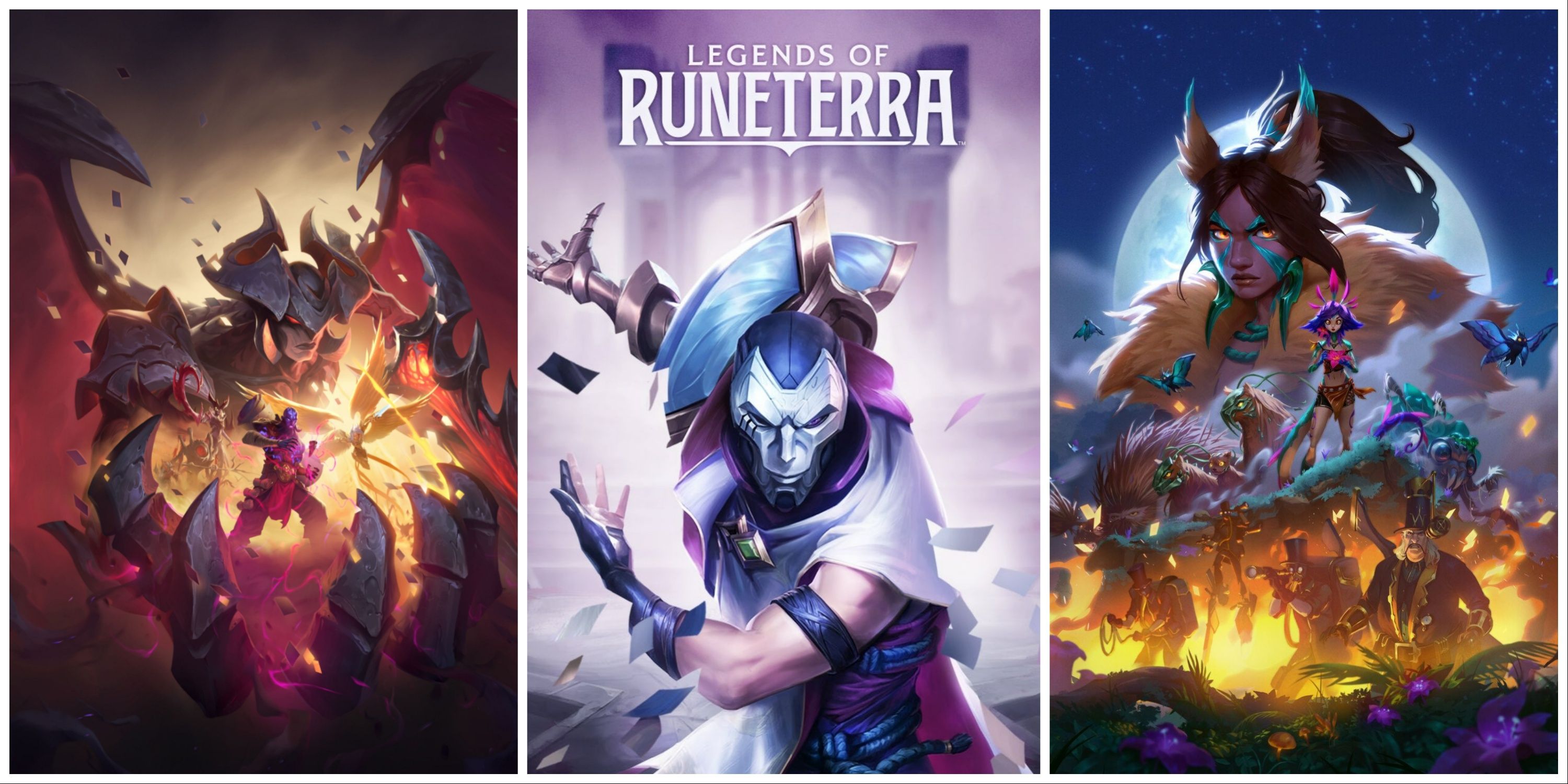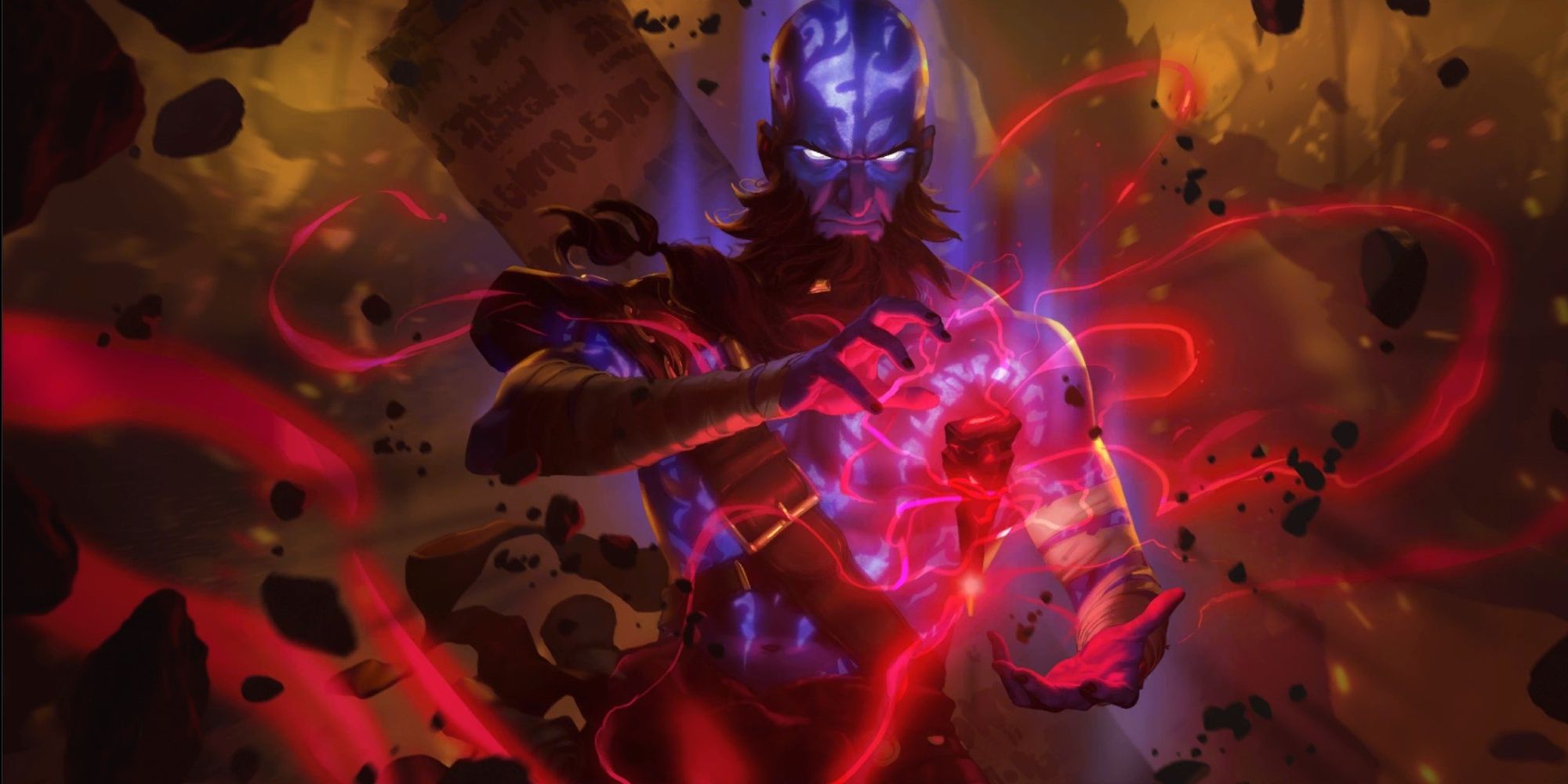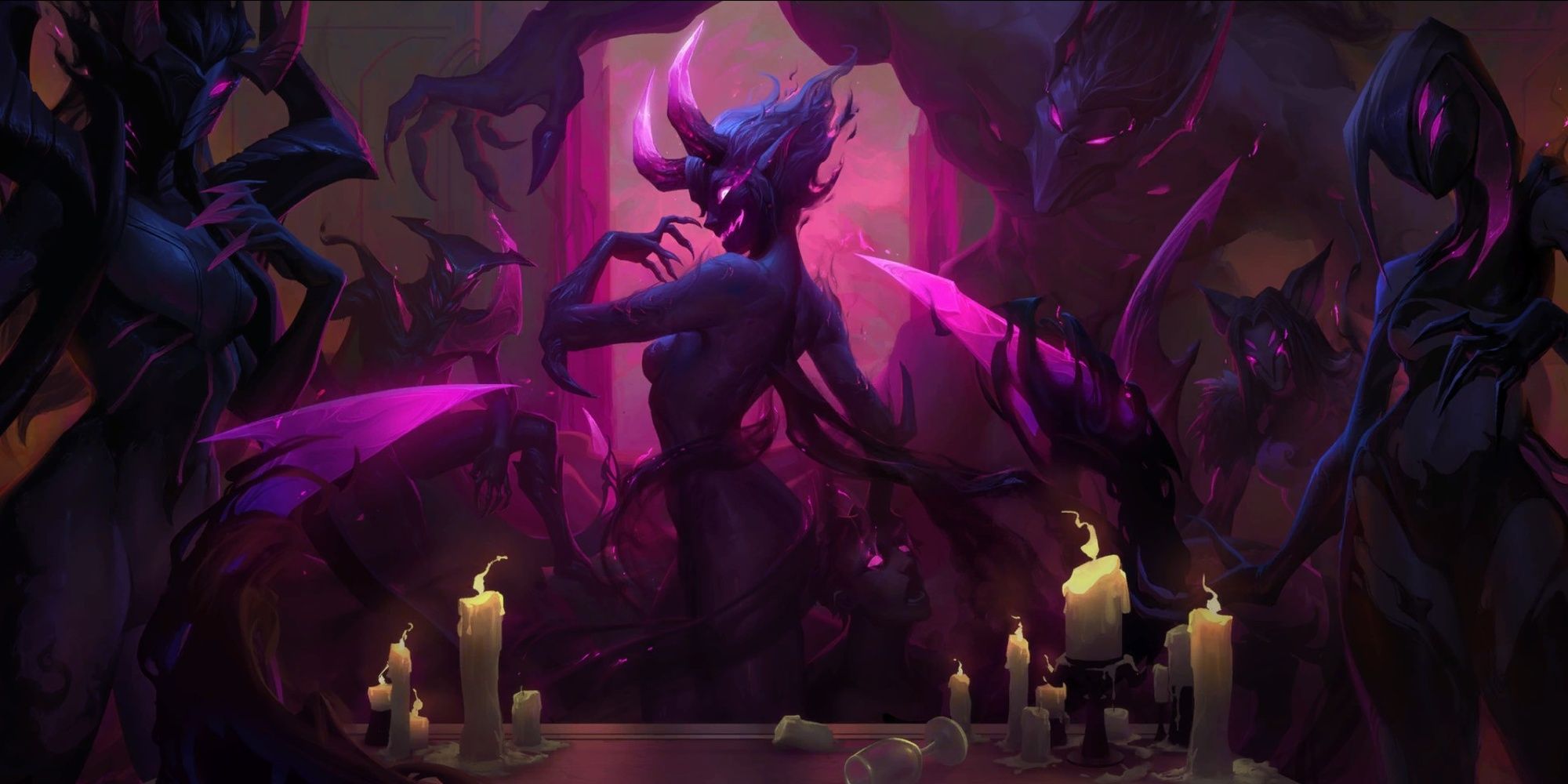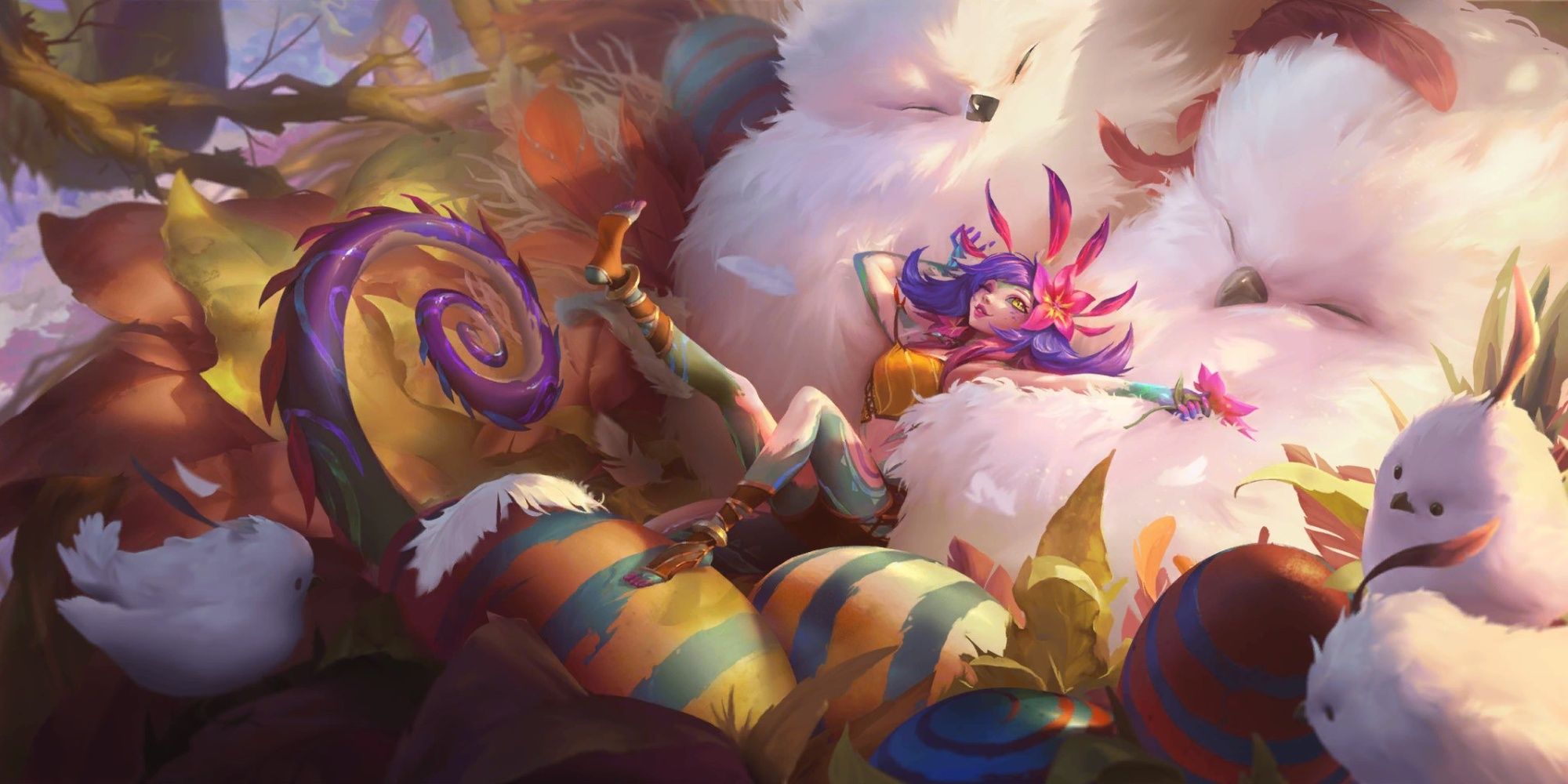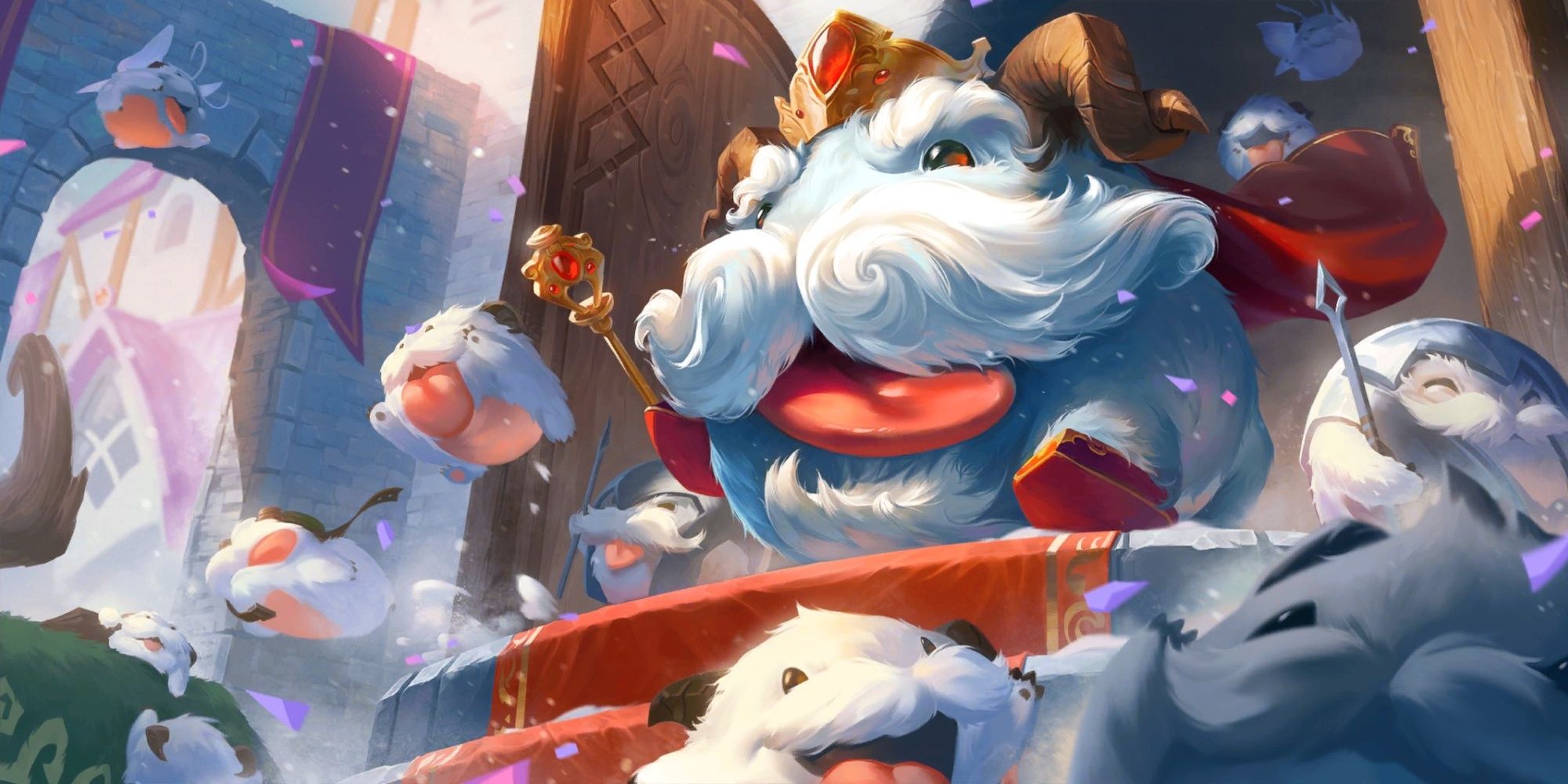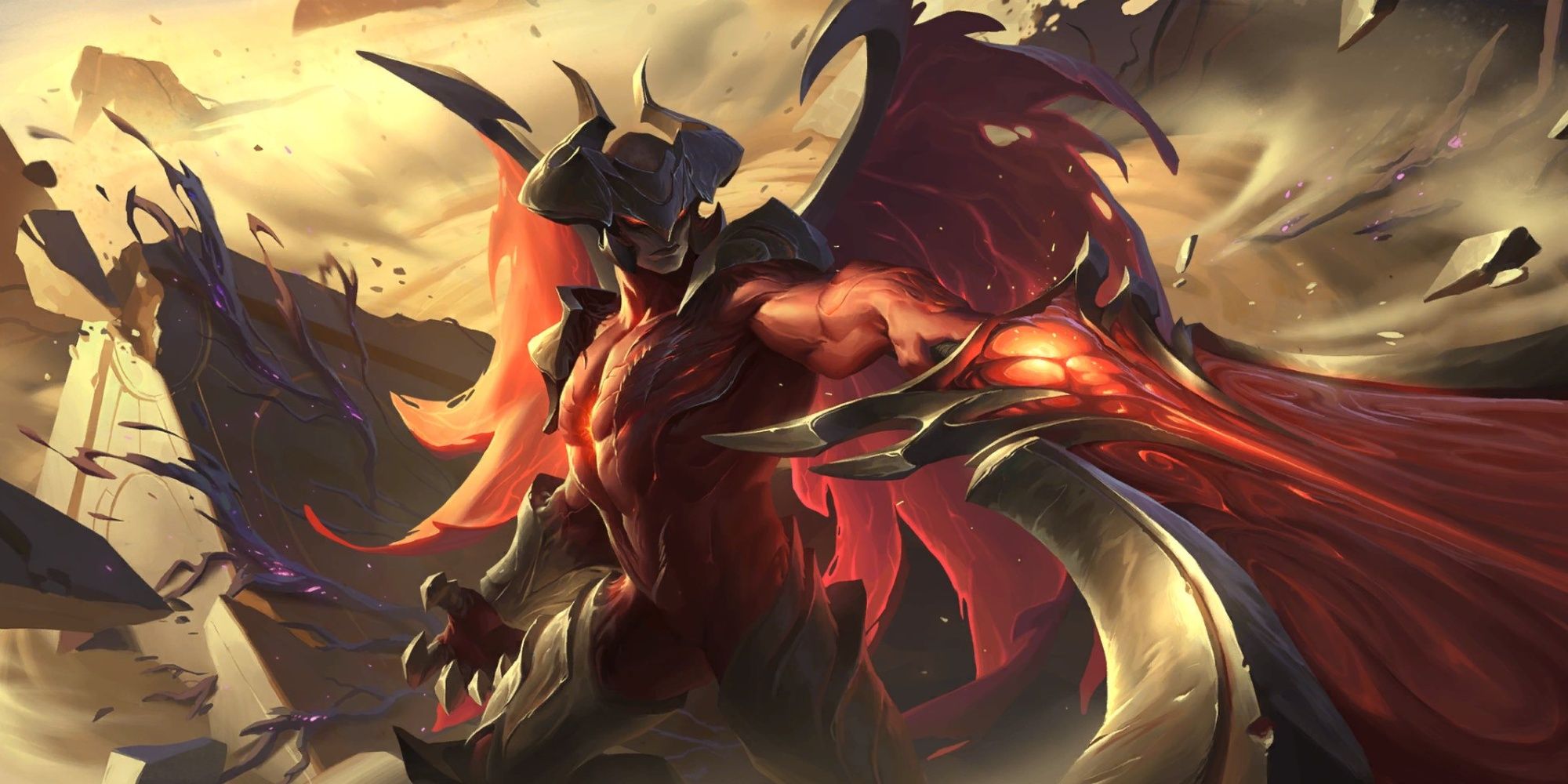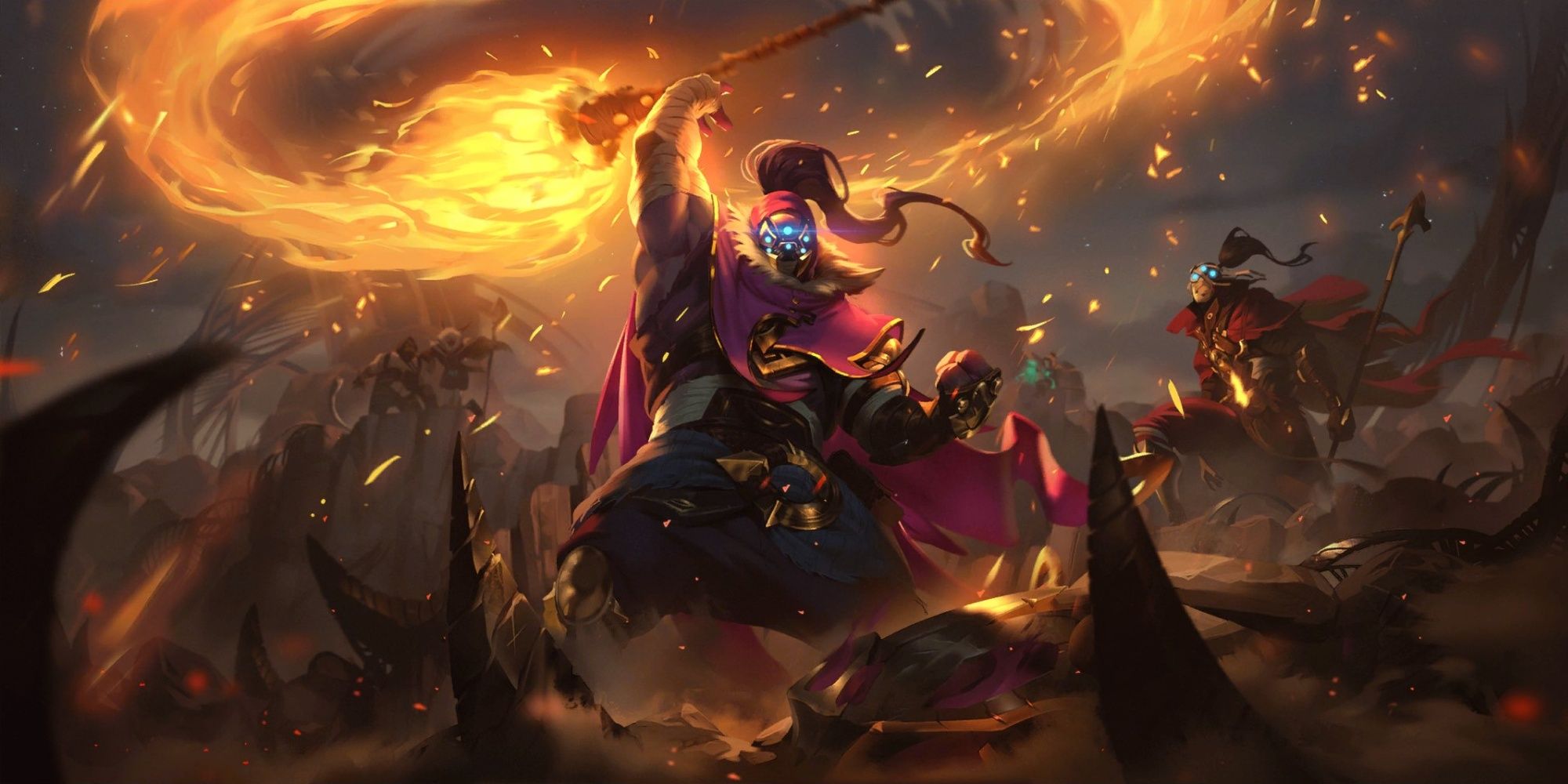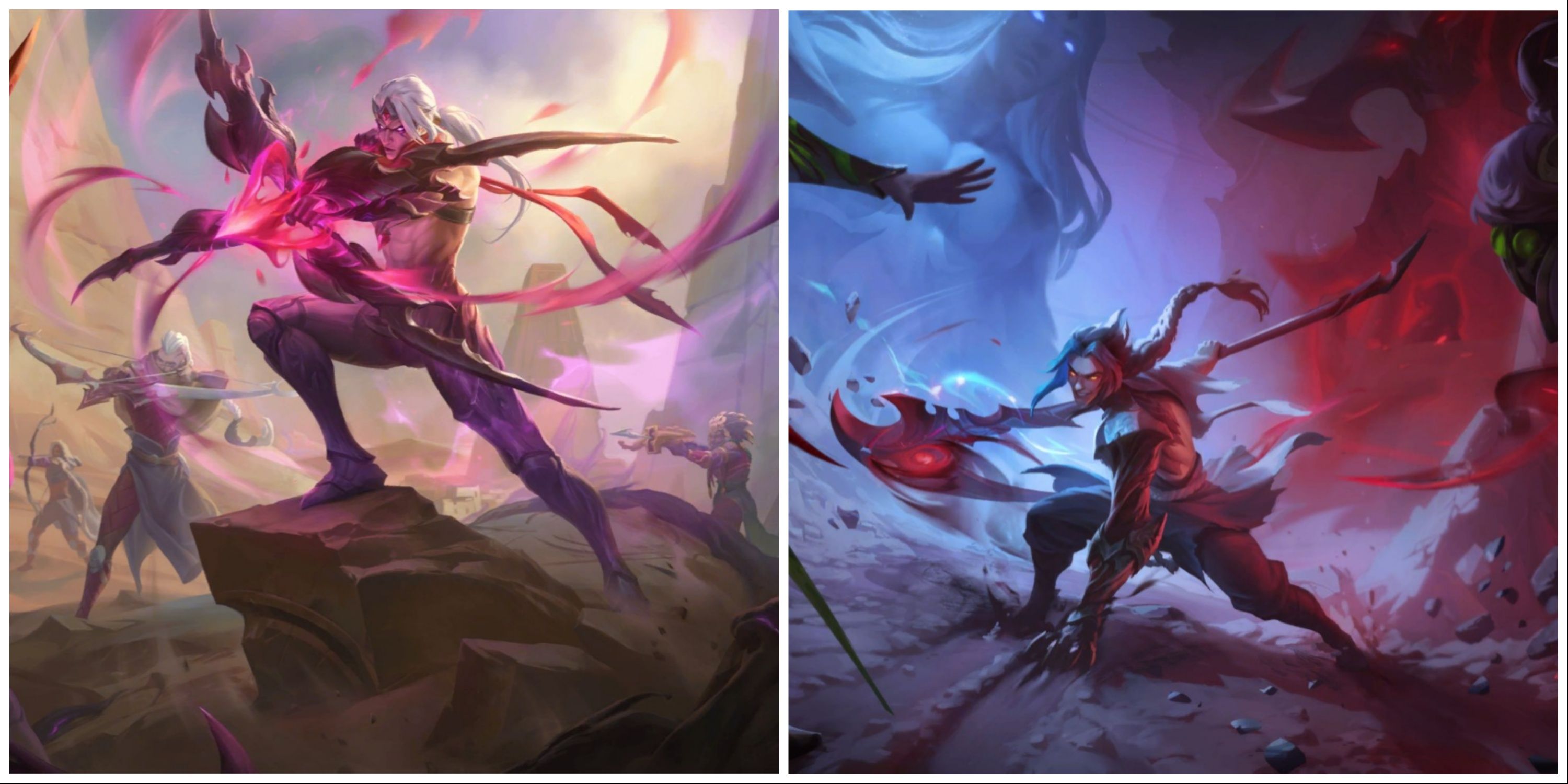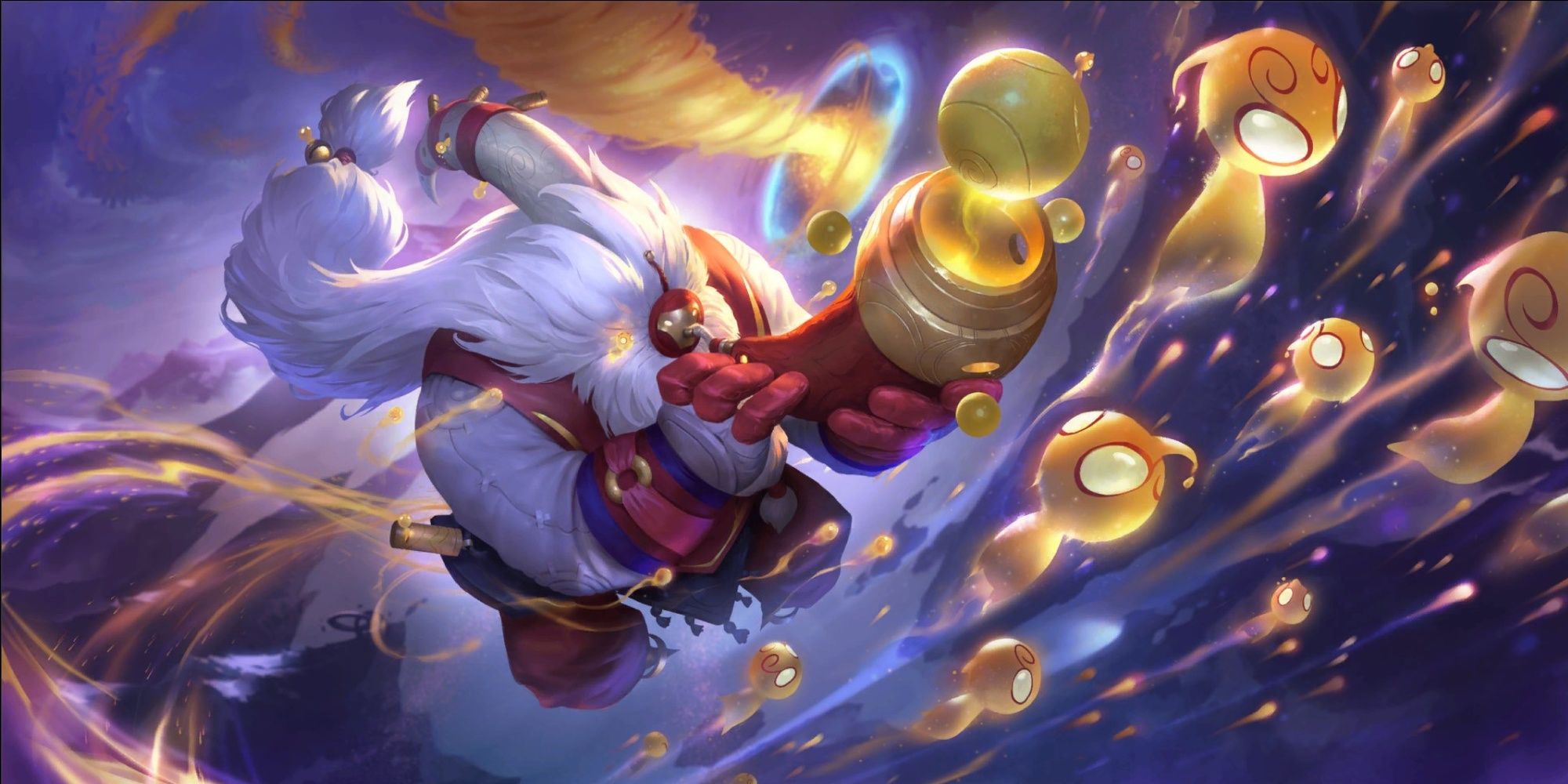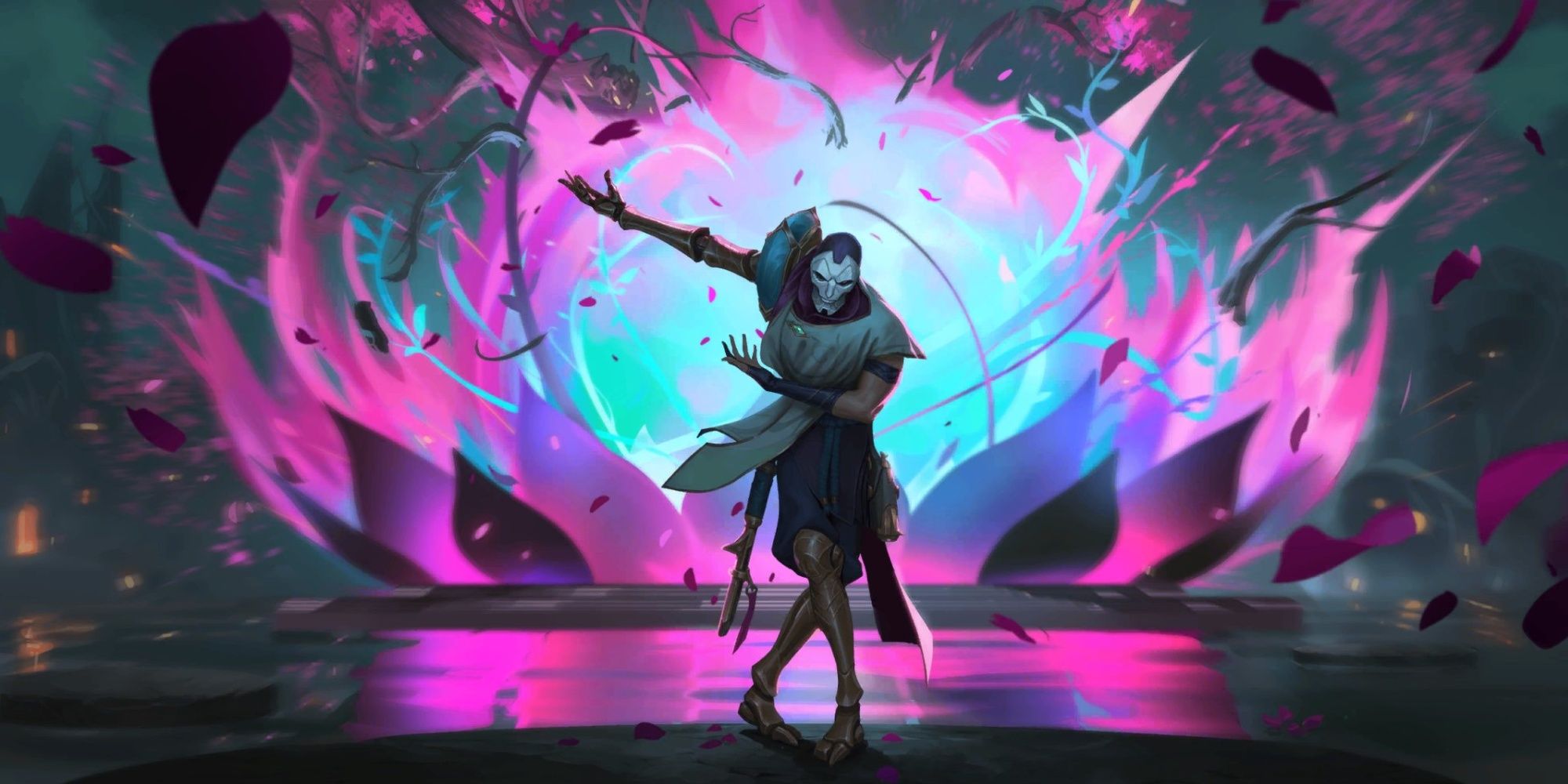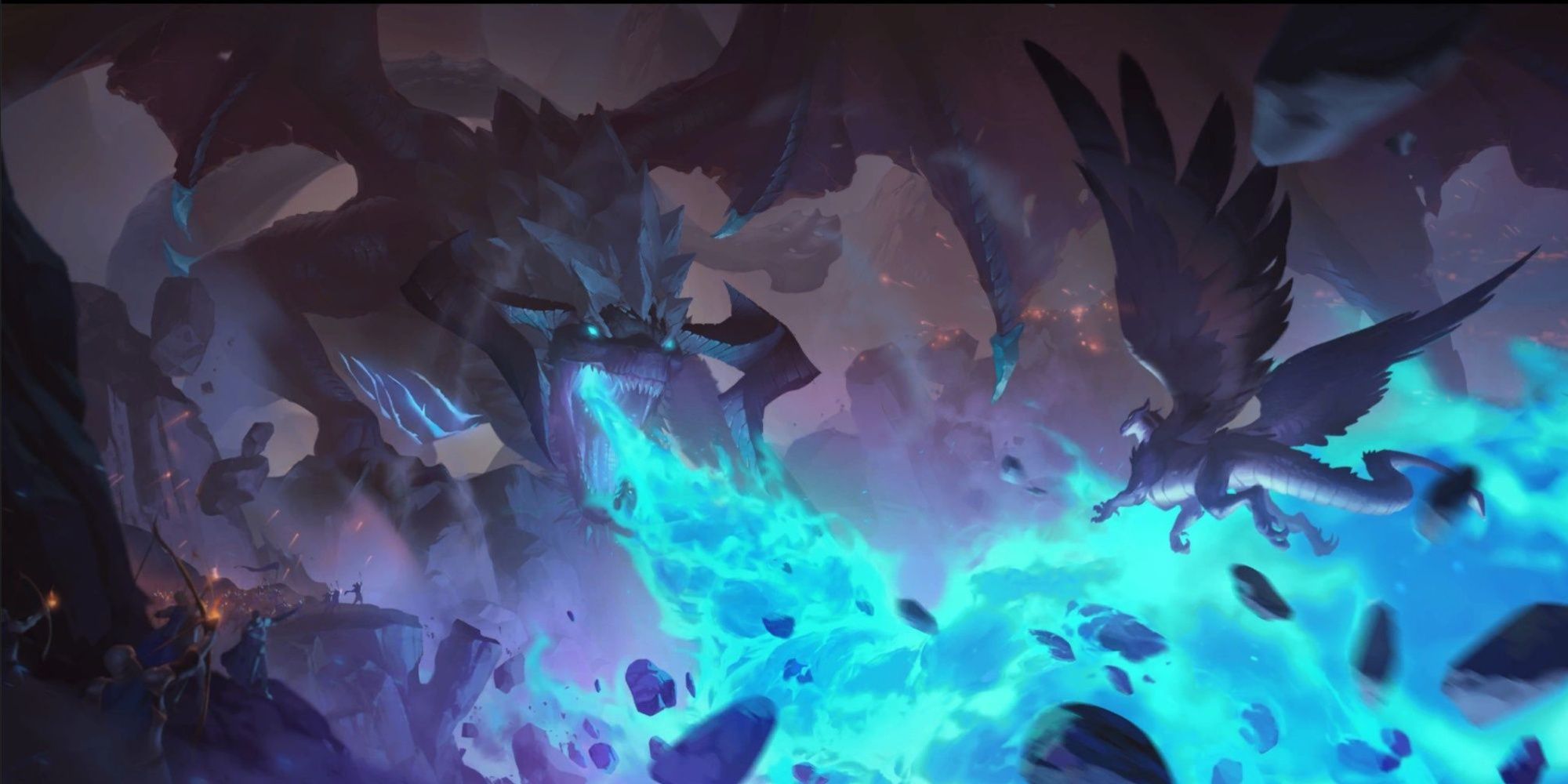Highlights
- Runeterra champions introduced a new type of champion with their own region and card pairing possibilities, opening up new combos for players.
- Not all origins are created equal, with some having dozens of cards and multiple archetypes while others have limited options.
- Some champions, like Jhin and Elder Dragon, have powerful origins that greatly enhance their playstyles and give access to a wide range of cards and abilities.
When the long-awaited virtuoso Jhin was released in Legends of Runeterra, he introduced a completely new type of champion: Runeterran champions. Players could choose these champions, and they would act as their own region with their origin specifying what cards players could pair them with. This opened new possibilities and new combos for players to experiment with.
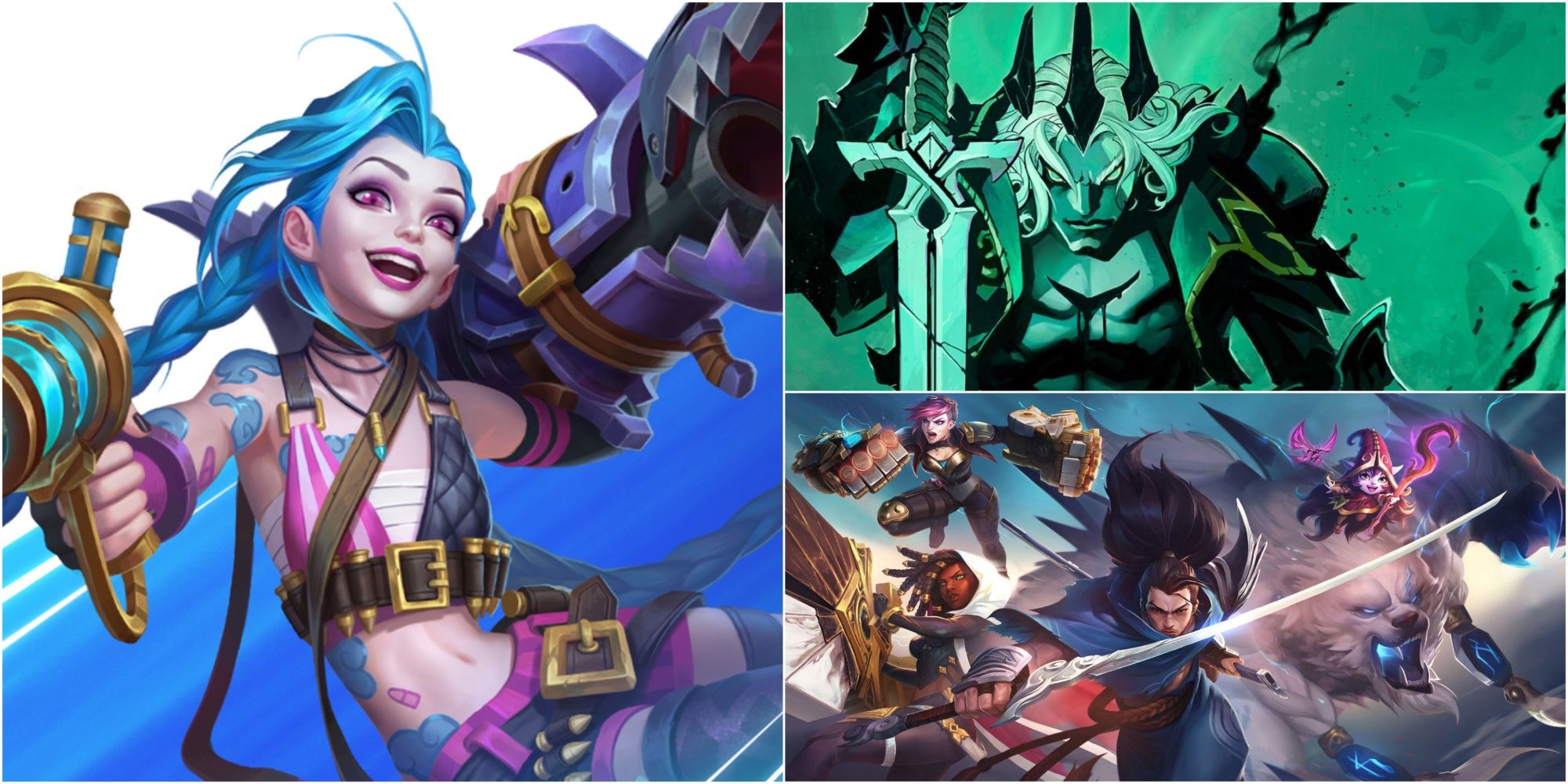
Every Game Set In The League Of Legends Universe, Ranked
Several games are set in the League of Legends universe, with plenty more to come. Here's how they stack up.
Later, Runeterra champions would not follow the precedent set by Jhin. Some origins included dozens of cards and supported multiple archetypes. Others had less than a handful of followers and very limited deck combos. Clearly, not all origins are created equal.
10 Ryze
The Rune Mage
- Allows any non-targeted burst and focus spells into the deck
- At the start of the game, create two Delve Into The Past into your deck for each Ryze that started in your deck
Ryze, one of League's original champions, is first because there's really only one way to play him: assemble the world runes. Despite giving access to over 70 different spells, there's no change to his game plan.
If fans are playing Ryze, they're automatically playing a control deck. A deck like this almost always contains very few units and relies on spells to protect one's nexus. The second region could still change things slightly (like using Piltover and Zaun for more draw or Ionia for its stuns and recalls), but it's still the same deck at the end of the day.
9 Evelynn
Agony's Embrace
- Allows any cards that summon husks into the deck
Evelynn is interesting because it seems that her followers see more use than she does. For example, Hate Spike is a spell that is practically required for every Shadow Isles deck because of its high damage and ability to create slay fodder.
While Evelynn previously was meta-defining (especially with Siren Song before it got nerfed), she now only sees play in a few decks that focus on slaying allies, such as in Demacia and the Shadow Isles, but even then, some champions are better picks because they fill a similar role without taking the second region slot.
8 Neeko
Many-Shaped Jungle Friends!
- Allows any bird, cat, dog, elnuk, fae, reptile, and spider followers into the deck
On paper, Neeko seems like she'd give players a lot of options to work with. In total, her origin grants access to 61 followers across every region. However, with so many random pieces, it's difficult to make them all come together. Regardless of how the deck was built, the Wincon was always the same: level up Neeko to buff every follower and use her unique camouflage ability to sneak past the enemy (an ability worthy of its own game).
While powerful, it was still limited: players can pair her with Demacia for their focus on units or with Freljord for other sub-type synergies. But the goal is still to throw a bunch of different sub-types at the opponent rather than caring about which sub-types they picked.
7 Poro King
The Poro King's Decree
- Allows any cards with the word "Poro" on it into the deck
Unsurprisingly, the Poro King's origin allows players to put any of his subjects into their deck. However, the poros themselves aren't anything impressive, often with minimal stats and a keyword. This pushes any Poro King deck to a swarm strategy where players buff their cheap units and go wide with them. It's not a bad strategy.
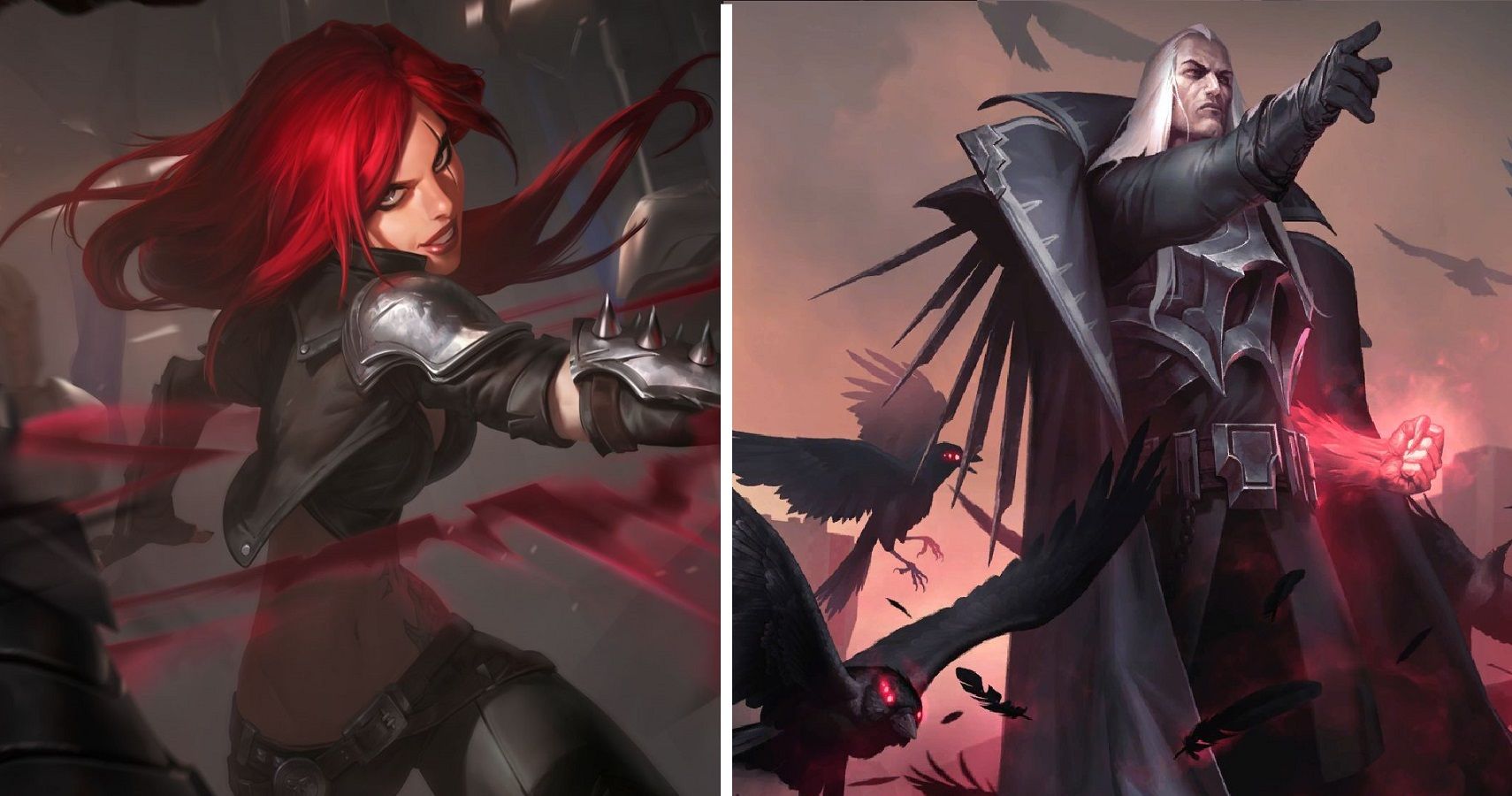
10 Best Champions In Legends Of Runeterra
These champions are usually absolute game-changers but, just like with every game, some of them are just better or more useful than others.
It pairs well with Bilgewater's focus on 1-cost units, and Targon's focus on buffing units. Given how different those two strategies are, it's not too bad for an origin that just gives players an army of puffballs.
6 Aatrox
The World Ender
- Allows any non-champion Darkin into the deck
- Once you've played 3 different Darkin, draw Aatrox
While Aatrox has an impressive ability (significantly reducing the cost of all Darkin upon level-up), his origin is less impressive. The ability to put non-champion Darkin into one's deck just means players get access to a lot of equipment, albeit ones that can become powerful units in the late game (fitting for characters that were once considered demons).
Still, Aatrox does have some nice deck variety, with some focusing on leveling him up and others focusing on his equipment synergies, usually by partnering him with Demacia. For that reason, he's this far in the ranking despite his origin having the second smallest pool of cards to pick from.
5 Jax
Grandmaster At Arms
- Allows any weaponmaster cards into the deck
Jax's origin puts the focus on weapons and equipment. His followers, weaponmasters, have a powerful ability called improvise, which gives them equipment upon being played. This means players don't have to spend any deck space on their equipment. Given how equipment goes back to the hand after their unit dies, this is probably for the best and prevents the player's hand from bricking.
In terms of strategies, Jax has very similar uses to Aatrox. Which one is better comes down to personal preference, but Jax has more pairing options like Orn and a better early game (much like his League of Legends counterpart).
4 Varus & Kayne
The Arrow Of Retribution And The Shadow Reaper
- Allows any cultist followers into the deck
- After playing a certain amount of cultists, draw your Runeterran champion
Varus and Kayne would have been ranked earlier if it weren't for each other. They follow the trend of other champions where their origin consists of their followers spread throughout different regions, but by sharing a sub-type, they essentially get twice as many followers as a normal champion.
Varus can benefit from some of the cultists that were released with Kayne and vice versa. This gives some nice variety that fans don't see in origins specifically tied to a sub-type or a specific strategy, putting them above those types of origins.
3 Bard
The Wandering Caretaker
- Allows any cards that plant chimes into the deck
- After turn 3, plant a chime in your deck for each Bard that started the game in your deck
While Bard does suffer from a small selection of cards (10 in his origin), his mechanic more than makes up for it. Bard's gameplay revolves around chimes and putting them in the deck. Once one is drawn, it buffs a random unit in a player's hand. This type of mechanic has plenty of uses.
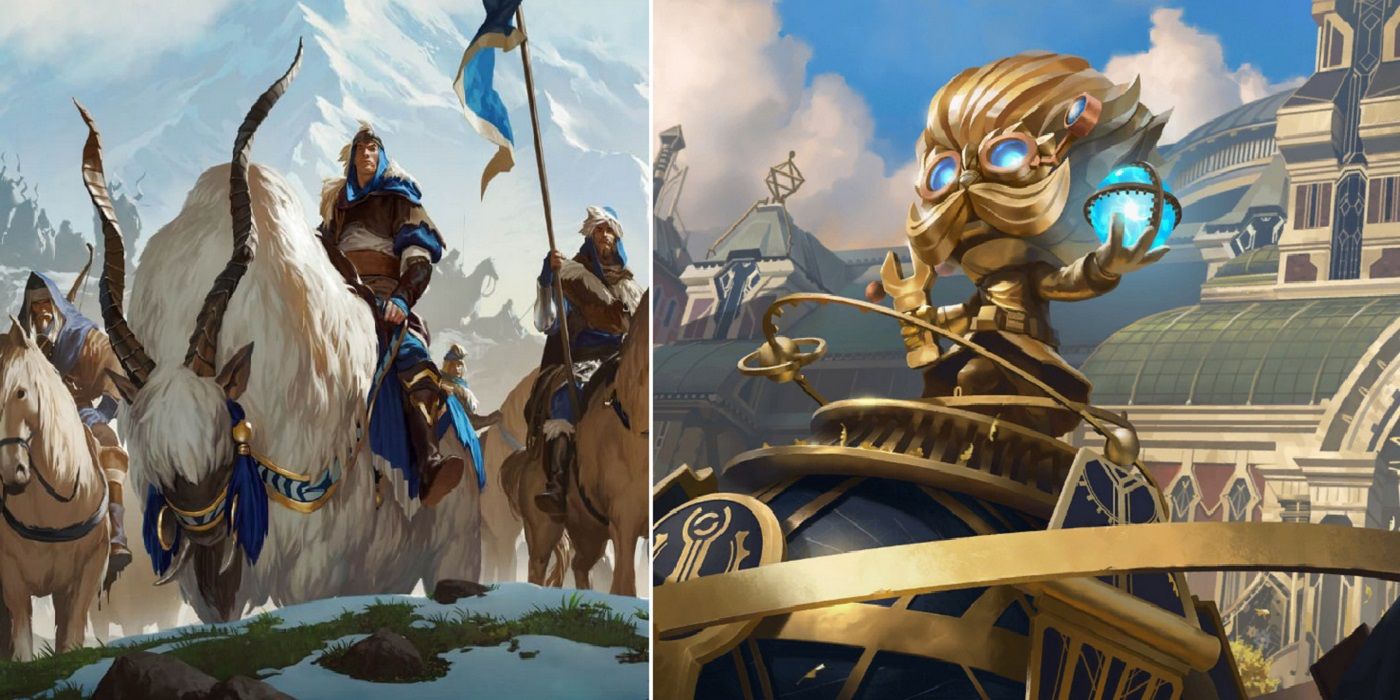
Legends Of Runeterra: Every Faction, Ranked
From the defensive Demacia to the underhanded and terrifying Shadow Isles, here's a ranking of all of Legends of Runeterra's current factions.
The clear pairing is with Targon and Kayle's empower mechanic, but the Freljord's deck buff archetype can always benefit from the extra stats, or players can use Piltover or Shadow Isles to print cards and reach significant stats. Bard's origin, more than others, shows that utility is often more important than variety.
2 Jhin
The Virtuoso
- Allows any follower with a skill into the deck
- When you play 3 skills, fast or slow spells, deal 1 to the enemy nexus
Jhin, one of the best bot-lane picks in League, almost deserved the number one spot for being the first Runeterra champion but just couldn't quite make the cut. That's not to say his origin isn't amazing. It grants access to over 40 units, most of them being useful to Jhin's aggressive playstyle. Not only that, but Jhin also deals one to the enemy nexus for every three skills or fast/slow spells, and if Jhin himself is in play, he'll stun the weakest enemy.
It's quite a lot of benefits although it is conditional upon drawing him early on to get the most out of it. Still, any player looking for an aggressive deck almost inevitably finds themselves playing Jhin.
1 Elder Dragon
Aspect Of The Dragon
- Allows any followers that cost more than 6 mana into the deck
- When you play a 6+ base cost follower, play 1 of 2 dragon boons
The Elder Dragon easily has the best origin in the game. It's so good that some decks include one copy of Elder Dragon just for the origin and ignore the champion entirely. The origin alone gives players access to over a hundred followers, most of them being heavy hitters who can change the tide of battle.
Then, every single time that fans play a follower from his origin, they get a dragon boon. These boons referencing League's elemental dragons range from simple (such as fearsome) to broken (such as deathless), making these already colossal units even better at securing the win.
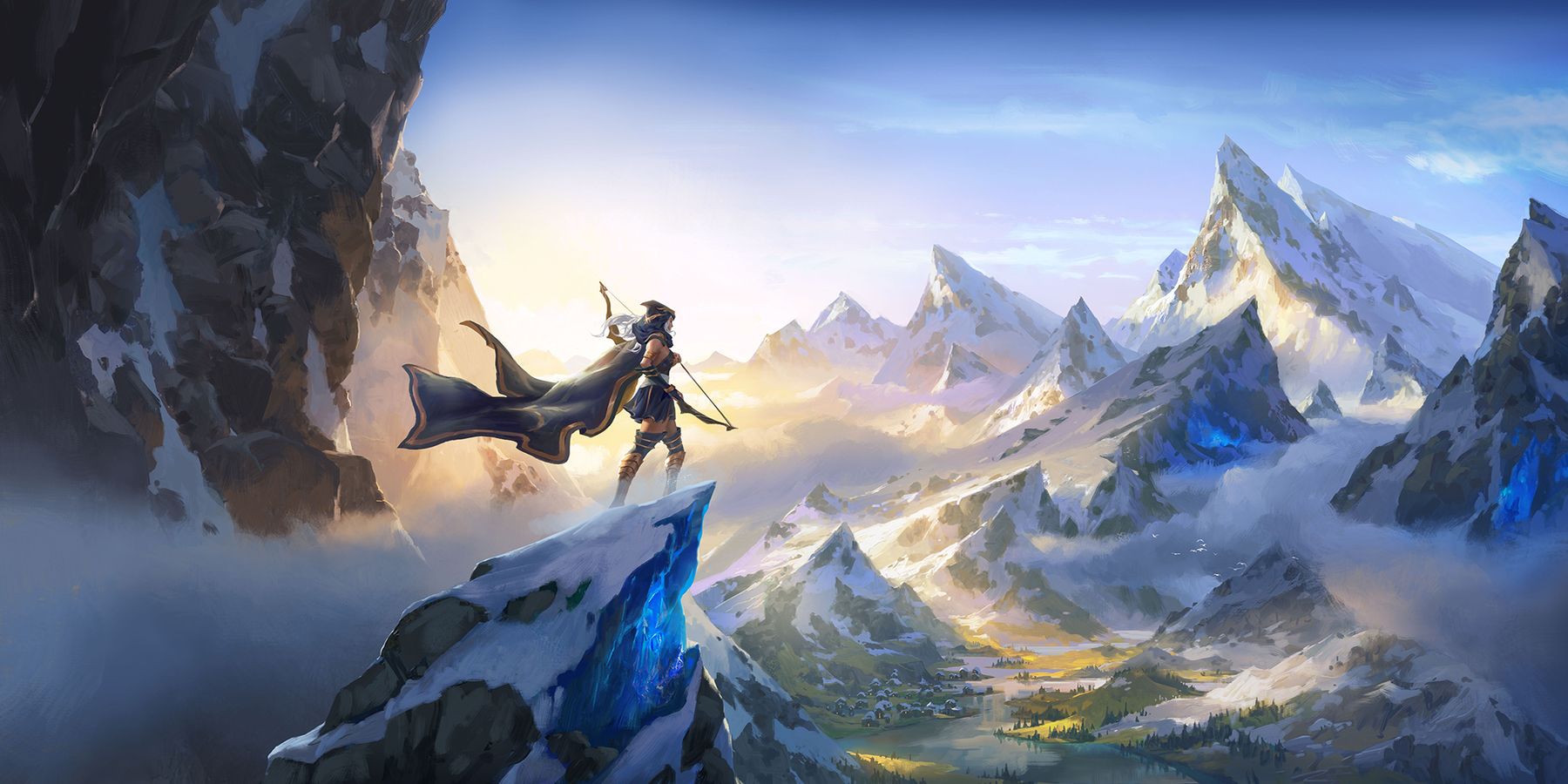
Why The World of Runeterra Needs An MMORPG
League of Legends’ expansive lore, colorful characters, and intricate universe make Runeterra the perfect setting for an MMORPG.

